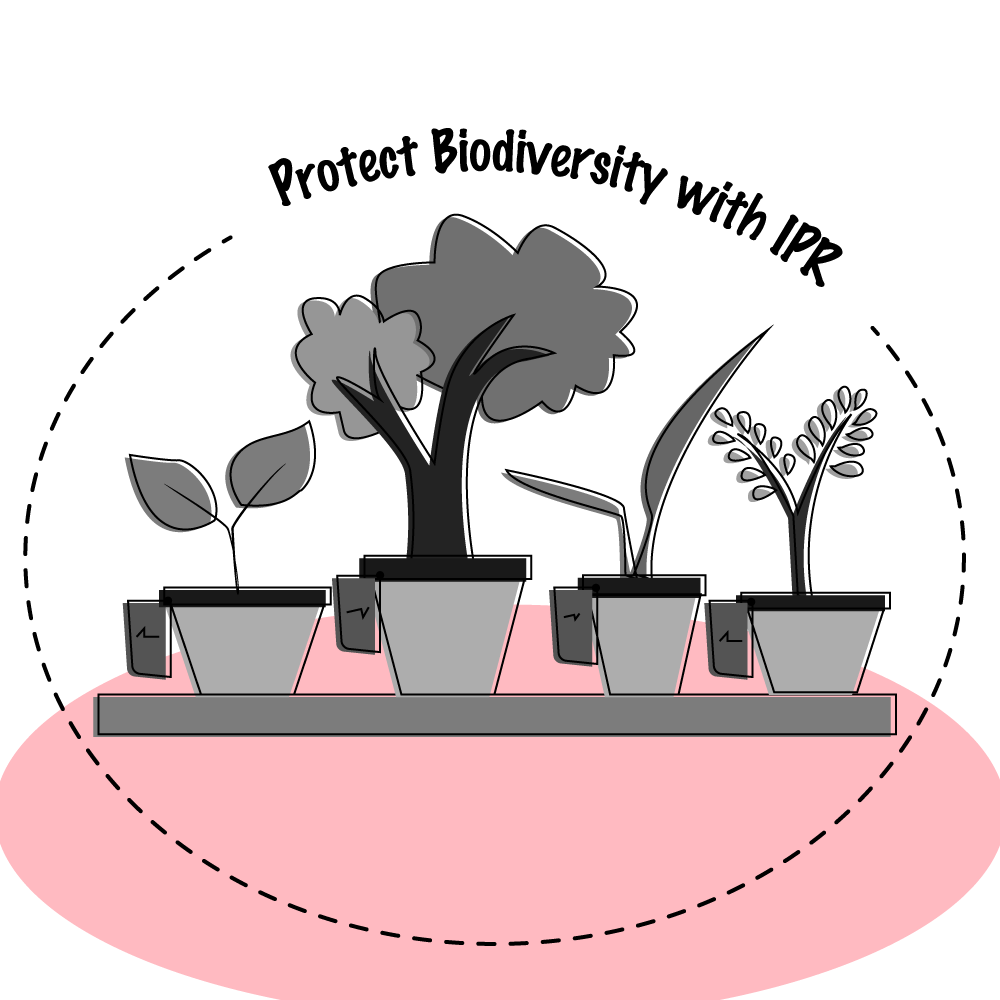Intellectual Property Rights (IPR) and Biodiversity

Introduction:
Biological diversity is the hallmark of life for living things in the modern, globalised world. It serves as the foundation for sustainable development, to use a cliché. The protection of new plant varieties, microbes, genetically modified organisms, and other things is made possible by the present intellectual property rights (IPR). The foundation of our sustainability is biodiversity. Although developed nations are better suited for research and development, they are not particularly wealthy in biogenetic resources. They make use of biogenetic materials imported from underdeveloped nations. Information from developing nations to the capital-rich west has therefore become insecure, and protection flows mostly in the opposite way via patents and plant breeders’ rights. It has both overt and covert effects.
IPR and biodiversity: a link
In the current IPR framework, commercialization of seed production, monoculture, and the protection of novel plant varieties, microbes, and genetically modified organisms are the main areas of focus. As a result, a rich biodiversity is steadily disappearing. Therefore, it is imperative to put in place a substitute mechanism that may bring formal intellectual property systems and the sustainable features of biodiversity into parity.
Even though they lack abundant genetic resources, developed countries have better facilities for research and development. They study biogenetic resources, the majority of which come from less developed countries. Because of this, biogenetic data is being transferred to industrialised countries in an unsecured (i.e., without IP rights) manner. On the other hand, genetic data is being transferred to the Global South through patents and Plant Breeder’s Rights in a protected (secured by IP rights) manner. This behaviour has both overt and covert impacts.
IPR-related effects on biodiversity
The social and economic effects of IPRs and their significance may be readily seen in emerging nations, and one of the more significant effects is the rights, such as patents. The patent on new variety seeds gives the nations that produce them a certain amount of sovereign rights of their sustainable usage. However, there has been several arguments being made on the scope of necessity of IPR on biodiversity. The majority of the arguments were in a negative perspective claiming the following
- The propensity to homogenise agricultural diversity;
- The prohibition on the export of traditional medicinal plants;
- The displacement of indigenous and traditional crops;
- Limitations on the use or selling of farm saved seeds by small farmers and indigenous populations
International Perspective:
There are some crucial factors that must be taken into account when examining the role of IPR in protecting biodiversity. i.e.,
- The World Intellectual Property Organization (WIPO) Intergovernmental Committee on Genetic Resources
- Traditional Knowledge and Folklore the Food and Agricultural Organization (FAO) International Treaty on Plant Genetic Resources for Food and Agriculture
- The Convention on Biological Diversity, 1992 (CBD)
- TRIPS (Trade Related Intellectual Property Rights
Indian Scenario:
The agro-biodiversity record is equally impressive. There are 320 species of wild crop relatives, 167 crop species, and numerous other domesticated animal species. India ranks sixth in terms of its contribution to global agriculture and is thought to be the source of a vast and diverse heritage of biodiversity.
Current IPR Regime eroding Biodiversity:
Farmers are required to grow novel plant kinds or commercially viable seeds by a number of government programmes. This commercialization increases genetic resource uniformity, which reduces genetic variety. As a result genetic degradation that are irreversible occurs. The commercialization of agriculture is facilitated by the existing IPR regime, which has accelerated the depletion of genetic resources. Research in the biotechnology industry likewise focuses on agribusiness and sparks interest in intellectual property rights, resulting in comparable detrimental effects of genetic erosion.
When compared to the requirement for patents, the Plant Variety Protection (PVP) level is far lower. Although uniqueness and distinctiveness are required, there is no mention of industrial applicability or utility. Because of this, rather than actual growth in agronomic features, the system is driven by commercial requirements of product distinctiveness under present PVP legislation. Similar to this, other PVP requirements, such as being stable and uniform, do not take into account regional variants created by peasants. Some regionally produced variants are less stable genetically. Local varieties can, nevertheless, adapt to the agro-ecological conditions of the Global South thanks to these characteristics. Moreover, increased uniformity increases susceptibility to the same illness, which in turn causes on-field biogenetic resources to deplete. The patenting of modified species as a result of the privatisation of biodiversity has boosted the use of monoculture plantations. The possibility that patents created species could have unintended negative effects on other bio-organisms or modify the environment in a way that further endangers biodiversity is another risk to biodiversity.
In conclusion, in order to have a sustainable civilisation it is important to protect the biodiversity. The role of IPR plays a very crucial role in empowering the local communities and residents who are the true guardians of the resources and knowledge generated from biodiversity. A people friendly IPR framework will effectively safeguard the interest of the indigenous communities from exploitation by commercially gaining or biopiracy and will therefore facilitate an atmosphere to promote the expansion of knowledge and creativity using the products of the biodiversity system.

